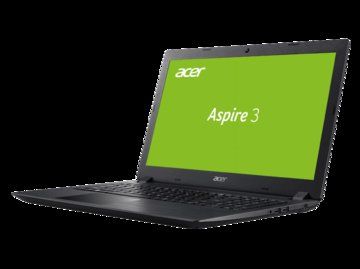
Aquí están las 13 revisiones y pruebas encontradas en el Ordenadores portátiles Acer Aspire 3 con las 10 calificaciones y comentarios de los evaluadores en su revisión.
Entre estas pruebas de sitios de Internet y revistas especializadas en Ordenadores portátiles, 10 dieron una calificación y obtenemos una calificación promedio de 3.3/5 para este producto Acer.
En bref
- 13 reseñas y opiniones con 10 valoraciones para el Acer Aspire 3
- Obtenemos una puntuación media de 3.3/5, o 65.2/100
Las clasificaciones del Acer Aspire 3
Source: https://www.commentChoisir.fr
| 4/5 Tech Advisor | 79/100 NotebookCheck | 3/5 LaptopMedia |
| 3/5 PCMag | 6/10 RTings | 3/5 Nerd Mobile |
| 2/5 Chip.de |
Pros y contras de Acer Aspire 3
Para una mejor comparación, hemos investigado para usted las ventajas y desventajas de Acer Aspire 3 y las notas de datos de los sitios especializados.
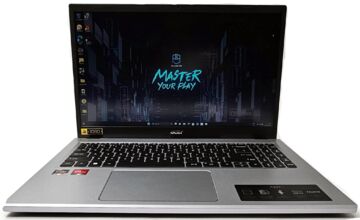

Rendimiento estable de Wi-Fi y SSD.
Funcionamiento silencioso
Demasiada flexibilidad del teclado
Los corazones Zen 2 no pueden competir con la competencia.
Sin sensor de huellas dactilares/lector de tarjeta SD.
[77/100] probado el 05/03/2018 - Test Acer Aspire 3 (i3-6006U, HD520) Laptop [leer la prueba completa en NotebookCheck]
[76/100] probado el 14/05/2023 - Acer Aspire 3 Laptop-Test: Ein erschwingliches Mendocino Angebot mit ausgezeichneter Akkulaufzeit und einem unterdurchschnittlichen Bildschirm [leer la prueba completa en NotebookCheck]
probado el 01/03/2022 - Test Acer Aspire 3 (A317-53) ? 17-inches of budget computing [leer la prueba completa en LaptopMedia]
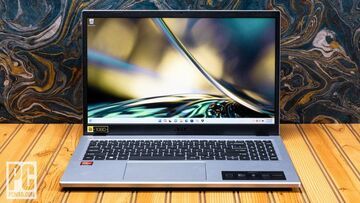

Mayor duración de la batería
Conectividad Wi-Fi actual
Precio inicial competitivo
Diseño anticuado, un poco frágil
Pantalla opaca
Se actualiza la configuración superior
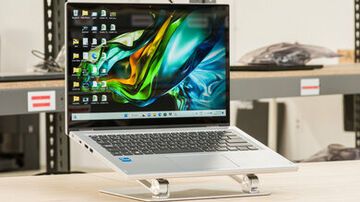

El procesador puede manejar la mayoría de las tareas de productividad ligeras.
Gran selección de puertos.
Batería de corta duración.
Limitado a 8 GB de RAM.
[6/10] probado el 16/11/2023 - Test Acer Aspire 3 Spin 14 (2023) Laptop [leer la prueba completa en RTings]
vida de batería excelente
Teclado y teclado numérico de buena calidad por el precio.
muy buen rendimiento en relación calidad-precio
Conectividad
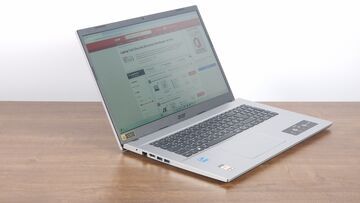

Equipo ampliamente adaptado para uso diario.
Brillo de la pantalla solo suficiente
Visualización sin color
No hay puerto USB tipo C disponible.
La webcam y el touchpad podrían ser mejores.
Sólido rendimiento de reproducción de video
Rendimiento decente de la aplicación profesional
Autonomía de la batería durante todo un día.
Visualización básica en 1080p
Pequeño disco de almacenamiento de 128 GB.
Acer Aspire 3 Reseñas de consumidores en plataformas de ventas
Las calificaciones de los sitios de Internet y las revistas pueden estar sesgadas, al menos con las reseñas de los clientes y los usuarios que compraron Acer Aspire 3 en Amazon o Fnac, estamos seguros de que tenemos reseñas reales sobre este producto. (los enlaces a las tiendas son patrocinados)
opiniones sobre otros Ordenadores portátiles Acer
Test Acer Predator PH18-73-RJ93, Test Acer Swift Edge 14 AI, Test Acer Swift Air 16,analisis marca Acer
